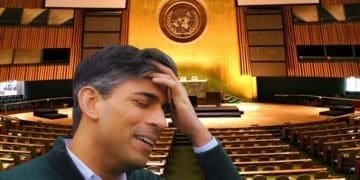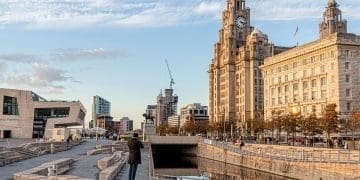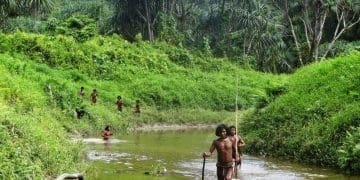The Botswana government has again demonstrated to the world that it either does not understand or does not care that elephants play a critical role in maintaining healthy ecological systems, nor does it understand that killing off prime elephant bulls undermines the very basis of its successful ecotourism economy.
Elephant killing auction
Evoking international condemnation, the Botswana government held a major hunting auction on 7 February. Six of the seven packages (of ten elephants each) were sold to the same white-owned hunting companies that benefited from Botswana’s hunting industry before the 2013 hunting moratorium. One package failed to reach the reserve price.
These 70 licences form the ‘special elephant quota’ element of the 2020 hunting quota of 272 elephants. Adverts for the auctions were only released to the public on 3 February. Interested bidders then only had until 7 February to register – at best an indication of the rushed way in which the reintroduction of hunting to Botswana has been managed; at worst, an indication of pre-decided outcomes.
The EMS Foundation, a South-African based conservation advocacy and research organisation, attempted to bid for the licences. It wrote a letter to Dr Cyril Taolo, the director of Wildlife and National Parks, requesting a revision of the qualifying criteria:
to enable us to bid on the hunting packages on the 7th of February 2020 with the express intention that the elephants included in these packages are not hunted should our bids be successful.
The letter further notes that:
we wish to purchase available licences with no intention to hunt elephants, but for the money to be appropriately distributed in a way that benefits conservation.
Local communities would therefore not be deprived of the revenue that would otherwise accrue through auctioning off elephant hunts. Of course, the hunting outfitters would lose out, but communities would have cash in hand, provided appropriate governance mechanisms were established through which to equitably distribute the revenue.
The letter objects to the fact that the bid criteria “explicitly excludes tourism operators or foundations/companies such as ours that do not want to hunt elephants but do desire to fund non-consumptive conservation in Botswana”. Clearly, those who are willing to invest directly in conservation activities, and even subsidise revenue shortfalls in areas where non-consumptive tourism is apparently unviable, have been overtly excluded from the bidding process.
 An arbitrary quota
An arbitrary quota
The licences on auction were 10 each for CT4, CT7, CT29, NG8, NG9, NG11, and NG35. Ngamiland concessions 8, 9, and 11 are held by local communities. Local communities in NG3 objected to hunting in their concession (where a hunting disaster occurred in 2019 involving the shooting of a collared research bull). Consequently, there is no 2020 quota for NG3, but the quotas for some of the neighbouring concessions appear too high.
There has also been no consideration given to maintaining hunting-free corridors in critical areas such as NG41, which will be auctioned later. This suggests that the quota is not based on science: the way in which it has been divided up is arbitrary. If there is science to support the quota and the way in which it has been allocated, this should be made publicly available.
The results of the auction are telling. Six 10-elephant packages sold for between $330,000 and $435,000 each. The package for CT29 did not sell because it did not fetch the minimum clearing price. The government amassed a total of $2,355,000 for six packages. There is no indication of how this money will be spent. One can only question the governance process. Successful bidders will now look to sell elephant hunts for upwards of $60,000 per elephant, normally paid into foreign bank accounts. At an average cost of $39,250, the margins are impressive. But where is the governance guarantee that local community members are actually going to benefit from these licences distributed to wealthy hunting operators? Community-based natural resource management schemes were a governance mess long before the hunting moratorium was imposed.
CT4 and NG9 both went to Jeff Rann Safaris, now offering a 10-day elephant hunt for $85,000 on its website. Professor Joseph Mbaiwa of the Okavango Research Institute has long been an advocate of lifting the Khama-era moratorium on hunting in Botswana. Mbaiwa is a joint shareholder with the Rann Share Trust in a company called Xudum Okavango River Pty Ltd (XOR).
CT7 went to Leon Kachelhoffer, NG8 went to Clive Eaton (along with NG11, in partnership with Kaz Kader). NG35 went to Grant Albers. There are no obvious local community beneficiaries.
A tale of two presidents
President Masisi has been lauded by Safari Club International’s (SCI) CEO W Laird Hamberlin as a “role model for African wildlife conservationists” for reintroducing trophy hunting. He was recently awarded the ‘international legislator of the year’ award in Reno at the annual SCI Convention. The SCI’s infamous lobbying efforts have paid off.
In response to the auction, former president Ian Khama had the following to say:
I have been against hunting because it represents a mentality in those who support it to exploit nature for self-interest that has brought about the extinction of many species worldwide. This policy is driven by those who represent an industry that capitalizes on ecological destruction. The negative effects are already being felt in the tourism industry, which will threaten our revenues and employment that hunting proponents pretend they want to improve. No scientific work was done on numbers to hunt or places to do so. This new policy will also demotivate those who are engaged in anti-poaching who are being told to save elephants from poachers while the new regime is poaching the same elephants but calling it hunting. How can this government now be trusted to manage controlled hunting despite the rules whilst failing to control poaching?
Taking out some of the last big tuskers
There is no good ecological or economic reason to kill any of Botswana’s bull elephants. Hunting will simply create an additive effect to poaching, which is increasing rapidly and claimed the lives of roughly 400 elephants in 2017/18, according to a scientific paper published in Current Biology.
Hunting also traumatises elephants and makes them more aggressive towards humans, which exacerbates human and elephant conflict (HEC) in the country. One of the key rationalisations Masisi used to reintroduce hunting was that it would reduce HEC. There is scant evidence to support this claim. According to one 2019 academic paper, the majority of current measures to reduce conflict (such as hunting) “appear to be driven by short-term, site-specific factors that often transfer the problems of human-elephant conflict from one place to another”. Hunting is not a solution; better land-use planning is.
Perhaps of greatest concern regarding Botswana’s 2020 elephant hunting quota is that NG41 – owned by the Mababe Community – has been allocated 20 elephants (the single largest allocation, to be auctioned soon). As is clear from the map, this concession links the Okavango Delta to Chobe National Park and is home to most of the last of Botswana’s great tuskers.
Botswana’s Weekend Post last week reported that “a number of concerned business people in the tourism sector are chronicling how the former Minister [of Environment, Kitso Mokaila] is lobbying for South Africa’s Johan Calitz of Johan Calitz Safaris to lease a Mababe Concession (NG41)”. Concerning too is that in NG49 and CT8, 25 elephants will be eliminated along a relatively small area on either side of the Boteti River.
The Tuli Block area – which borders Zimbabwe and South Africa – will see 35 bulls shot in one year under Botswana’s quota alone. In 2013, four scientists published a paper showing that hunting in that area was unsustainable and at current rates of hunting, “trophy bulls will disappear from the population in less than 10 years”.
Why not allow any willing bidder (such as the EMS Foundation) to pay for these licences if that raises revenue to conserve magnificent bull elephants instead of eliminating them?
Short-term thinking vs long-term sustainability
There appears to be little to no appreciation for the critical importance of older elephant bulls for maintaining elephant institutions and ecological functionality. Botswana has also ignored the fact that any big-tusked bull is prized by photographers and can be photographed hundreds of times over during its natural lifetime.
Botswana should abandon short-term rent seeking in favour of long-term ecological sustainability as the foundation for its economy. Instead, it is selling its inheritance for short term rents from a purely extractive industry.
Featured image via diego_cue/Wikimedia

 An arbitrary quota
An arbitrary quota










